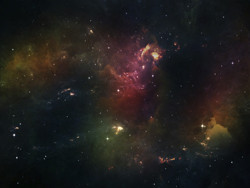Computing the dark sector of our universe
Numerical simulations are effective tools that provide robust predictions to solve cosmological problems, including the birth and growth of astrophysical objects. These estimations of how various physical processes evolve, once compared to present and future observations, can help assess the main cosmological parameters. The available computational resources permit the study of a multitude of astrophysical processes in the observable universe. However, 95 % of the energy in our universe is provided by two components of an as-of-yet unknown nature. Dark energy and dark matter was the focus of the 'Computing in the dark sector: a Cactus toolkit for modified-gravity cosmologies' (COSMOTOOLKIT) project. The COSMOTOOLKIT project was devoted to extending the freely accessible Einstein toolkit for use in numerical cosmology. This toolkit, developed by researchers around the world, combines a set of tools needed to simulate black holes, collapsing stars and other compact objects. COSMOTOOLKIT researchers developed a set of new software tools and libraries that can enable new science. Specifically, numerical techniques were incorporated for the evolution of fluids such as cosmic dust and scalar gravitational fields. Besides simulations of regions larger than a few gigaparsecs, the computational basis was adapted to allow the first 3D models of our universe. The groundwork was also laid to support theoretical efforts to define gravitational wave signatures. In parallel, the existence and uniqueness of solutions for Einstein's field equations on space-times that are periodic were investigated. While solutions were sought for half a century, the COSMOTOOLKIT project was the first to unveil the complete behaviour of periodic lattices of black holes. The rich phenomenology was described through numerical simulations for expanding lattices. The online portal 'The black-hole-lattice lab' was established to share the new codes and realistically model cosmological phenomena. This will also serve as a repository of information on black holes and a place for scientists to meet and discuss. Close collaboration had been fruitful within the COSMOTOOLKIT project and will be necessary for the optimisation of the numerical methods.
Keywords
Cosmology, software, dark energy, dark matter, simulations, universe, black holes, libraries, gravitational wave signatures







